Exhibitors at this year’s LASER World of PHOTONICS will be addressing fast-growing markets in precision automation and quantum technologies, as well as the need for reliable simulation software

In this second instalment of innovations being presented at LASER World of PHOTONICS, the international trade fair taking place at Messe München in Germany on 26–29 April, we highlight several exhibitors who are taking part in the inaugural World of QUANTUM event. They will be showcasing laser solutions designed specifically for current and future applications of quantum technologies, including sensing and imaging, computing, and secure communications systems.
Meanwhile, other innovations featured in this preview address the need for greater automation in microassembly processes and the perennial need for easy-to-use software for laser simulation. Read on to find out more.
TOPTICA showcases lasers for quantum applications
Specializing in state-of-the-art diode-laser technologies, TOPTICA is a key enabler for applications in quantum optics and spectroscopy. Highlights for this year’s LASER World of Photonics include complete frequency-comb solutions for quantum experiments that are built around the robust and reliable DFC CORE +, a device that delivers more power per tooth along with a larger frequency spacing. These complete DFC systems can be customized to include any desired wavelength extension, beat units, stabilization electronics, wavelength meters, counters and lasers.
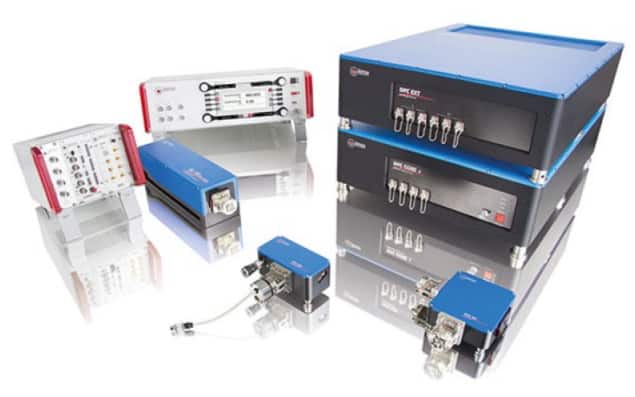
TOPTICA has also introduced modular and compact 19-inch laser-rack systems for quantum applications that save valuable bench space when configuring complex laser set-ups. For experiments with quantum dots, meanwhile, the company has expanded its family of continuously tunable lasers. The new CTL 900 laser extends the wavelength range down to down to 880 nm, while still maintaining the upper limit of 1630 nm.
In addition, the company’s versatile range of tunable diode lasers are now available with an intra-cavity electro-optic modulator. The high bandwidth provided by these lasers, which are suitable for a variety of applications, lock to narrowest linewidth and lowest phase noise. The DLC pro all-digital controller, which can be used to drive all of TOPTICA’s tunable diode lasers, also now includes a MOTORpro option for motorized wavelength selection and the AutoPID wizard for frequency locking with automatically optimized parameters.
Frequency-converted lasers are also available at any wavelength between 205 and 4000 nm, with higher powers now available in the visible range for standard systems (e.g. 2 W at 556 nm) and in the UV for fibre-amplified systems (e.g. 3W at 317 nm).
- TOPTICA will display their latest laser systems at booth 103, hall B5, while dedicated solutions for quantum applications will be shown at booth 171, hall A4, in the WORLD of QUANTUM exhibition.
High-performance fibre lasers shine on quantum experiments
A new range of Koheras HARMONIK frequency-converted fibre lasers from NKT Photonics have been designed with quantum applications in mind, offering new wavelengths for working with rubidium, strontium, barium and ytterbium, along with low noise, up to 10 W of power and a linewidth below 200 Hz.
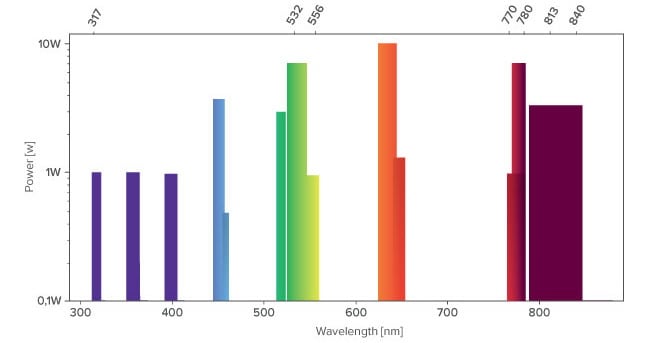
The fibre lasers are inherently stable, providing industrial-level reliability and ease-of-use to maximize experimental time. They do not require any alignment or maintenance, benefitting from the experience that Koheras has gained from installing lasers in demanding industrial applications and even in space.
Koheras HARMONIK lasers are now available at the following wavelengths as standard:
- 780, 840 and 1064 nm for rubidium
- 317, 813 and 1064 nm for strontium
- 532 and 1762 nm for barium
- 399, 556, 638, 770 and 1064 nm for ytterbium
For any other wavelength, contact NKT Photonics to discuss your requirements.
- NKT Photonics will be displaying its full range of laser solutions for applications in quantum technologies, life science and industrial manufacturing at booth 328 in hall B5.
PicoQuant celebrates 25 years of laser expertise
PicoQuant will not only showcase its latest product innovations, but also conclude its celebrations marking the company’s 25th anniversary. “I am really excited and happy that we can mark this occasion with an in-person gathering at the exhibition,” says Rainer Erdmann, managing director of PicoQuant. “I’d like to invite everyone to our booth [Hall B5, number 425] at 16:00 on Wednesday 27 April to raise a glass of sparkling wine.”
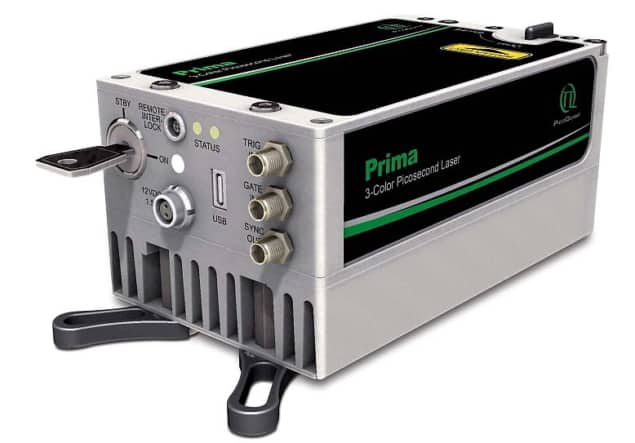
New product developments include Prima, a standalone diode-laser module that provides access to three individual wavelengths in either picosecond-pulsed or continuous-wave mode. This fully computer-controlled laser module generates laser light at 635, 510 or 450 nm, to meet the excitation needs for daily lab tasks, including lifetime or quantum yield measurements, and photoluminescence and fluorescence measurements.
The company’s VisUV/VisIR laser modules have also been updated to be fully remote controllable via a graphical user interface. Two new VisIR laser models expand the covered emission range towards the mid-infrared at 1950 nm, and deliver an average output power of more than 0.5 W with pulse duration below 100 ps FWHM. Flexible repetition rates with constant pulse parameters, combined with a compact form factor, make those models of particular interest for metrology, ranging measurements, and for testing detectors and cameras.
PicoQuant has also updated the MultiHarp 160, a scalable plug-and-play unit for event timing and time-correlated single-photon counting (TCSPC), to include on-board event filters that can be defined by the user. These offer an efficient way to reduce the file sizes and amount of data that must be sent via the instrument’s external interfaces. The MultiHarp 160 is optimized for applications requiring up to 64 timing channels with high sustained count rates, a time resolution of 5 ps, and an ultrashort dead time of less than 650 ps.
- Find out more about these latest product innovations at booth 425, Hall B5, in the main exhibition or booth 113, Hall A4, in WORLD of QUANTUM.
SmarAct launches new company to focus on high-precision automation
SmarAct Automation, the newest company of the SmarAct Group, was founded in November 2021 to address the increasing demand for automated microassembly solutions. At this year’s LASER World of PHOTONICS, SmarAct Automation will introduce itself as a partner for developing applications where miniaturization is necessary for future development. Such applications demand high-precision alignment, handling and joining of components – whether on a nano-, micro- or meso-scale.
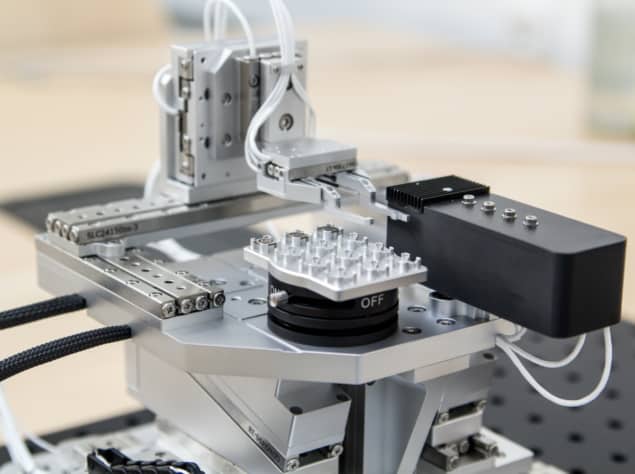
As part of the SmarAct Group, SmarAct Automation benefits from 15 years of know-how in high-precision positioning technology, as well as customized engineering and application development. The company exploits a strict modular framework to develop both partially and fully automated systems, combining the most advanced products from the SmarAct Group along with other state-of-the-art technologies to deliver precise, fast and reliable automation solutions.
To complete its portfolio, SmarAct Automation also offers process development, outsourced manufacturing options, and the mandatory maintenance and service packages for these products – enabling rapid development and future-proof integration of microassembly processes into a production environment.
- Contact SmarAct Automation to discuss your microassembly requirements, or talk to company representatives at booth 113, hall B5. SmarAct Group will also be exhibiting in World of QUANTUM at booth 201, hall A4.
Laser-simulation software locates aberrations within seconds
Berlin-based start-up BeamXpert has updated its laser-simulation software to quickly identify the source of aberrations in optical systems, and to directly display the impact that any changes in the laser set-up have on the key parameters, particularly the beam quality M². The software, called BeamXpertDESIGNER, is an easy-to-use 3D simulator of laser-beam propagation that returns ISO-compliant results.
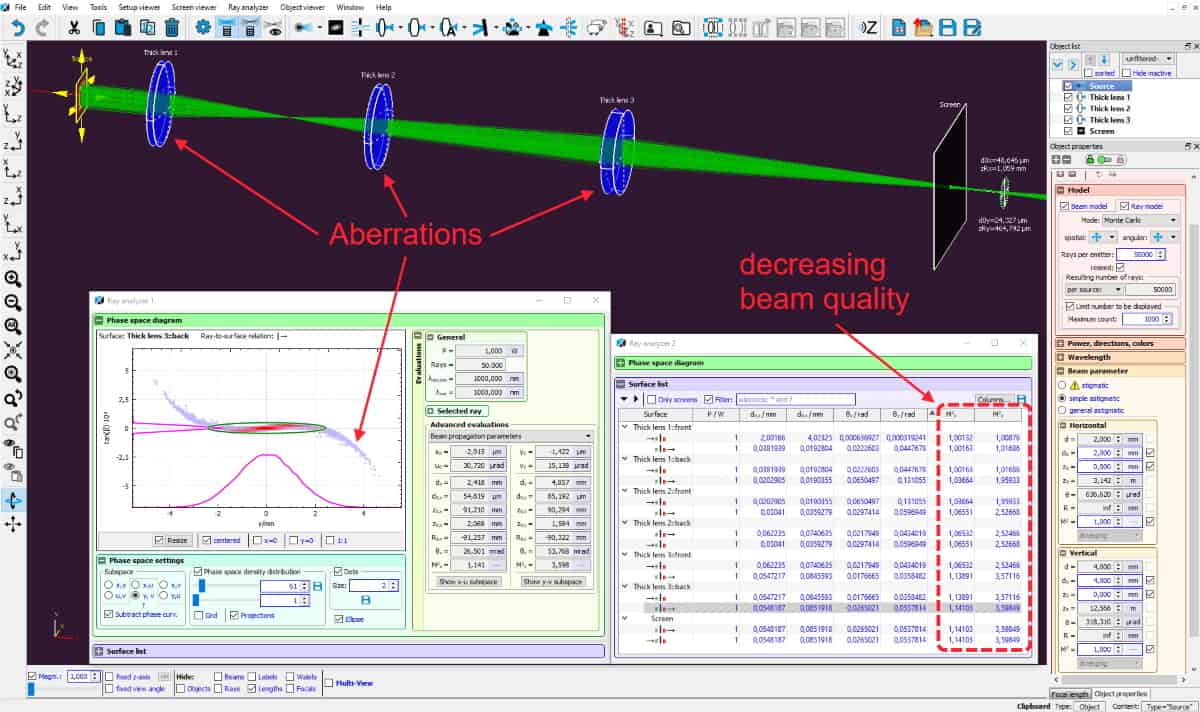
The software now offers Monte Carlo ray generation and multi-core support for its ray model. Together with the addition of a new ray analyser, the influence of aberrations on the beam quality can be evaluated almost in real time, while the laser-beam parameters can be displayed on the surface of any optical component. An improved grating object and a new compression algorithm for data storage adds to the software’s appeal as a universal tool that can be used by all laser system engineers.
BeamXpert has welcomed the positive response it has received from customers working in both basic research and more applied opto-mechanical engineering. Additionally, these clients appreciate that the BeamXpertDESIGNER software is available through a single-purchase license that is not time limited.
- For more information visit booth 528, hall B5, at the LASER World of PHOTONICS trade show, or go directly to beamxpert.com.



